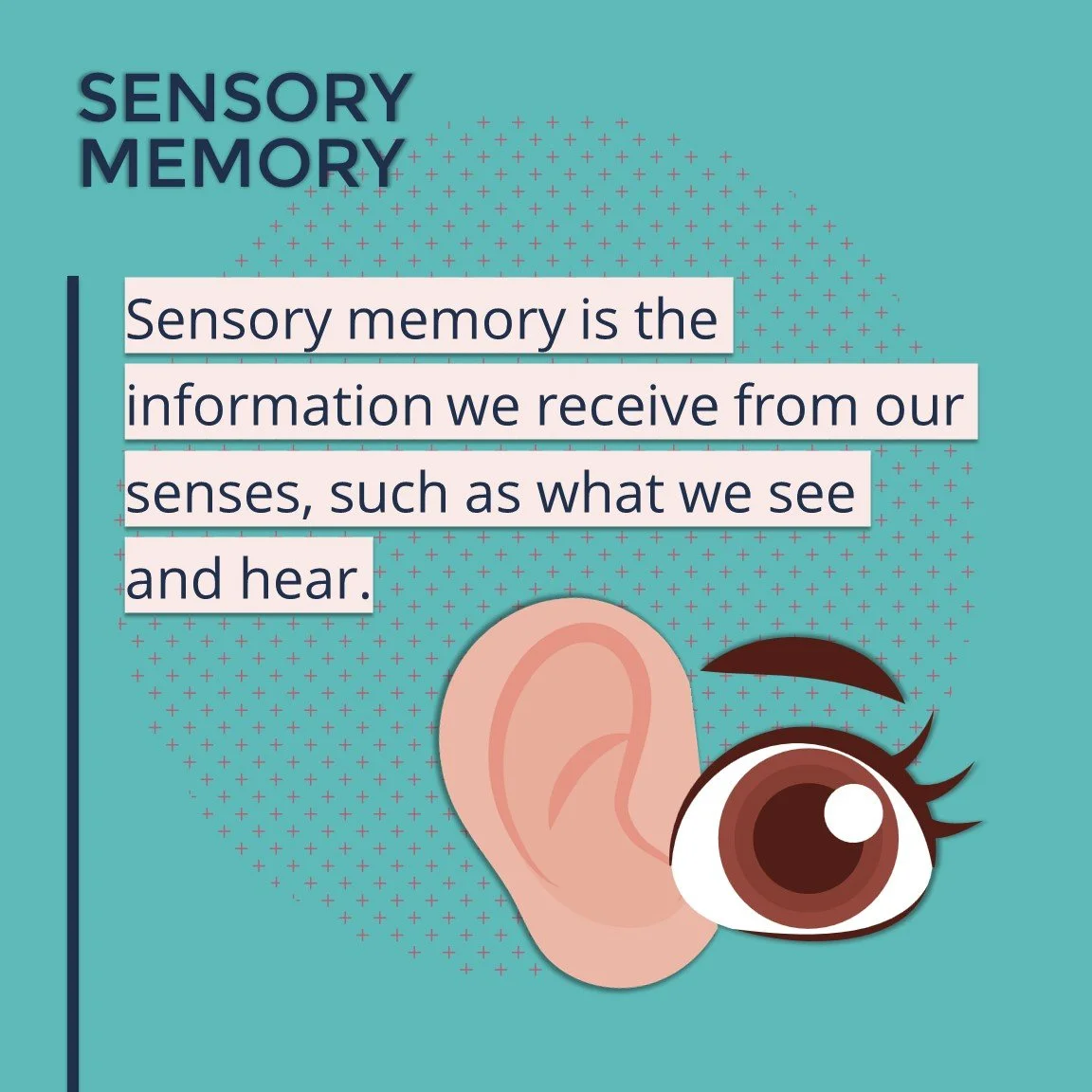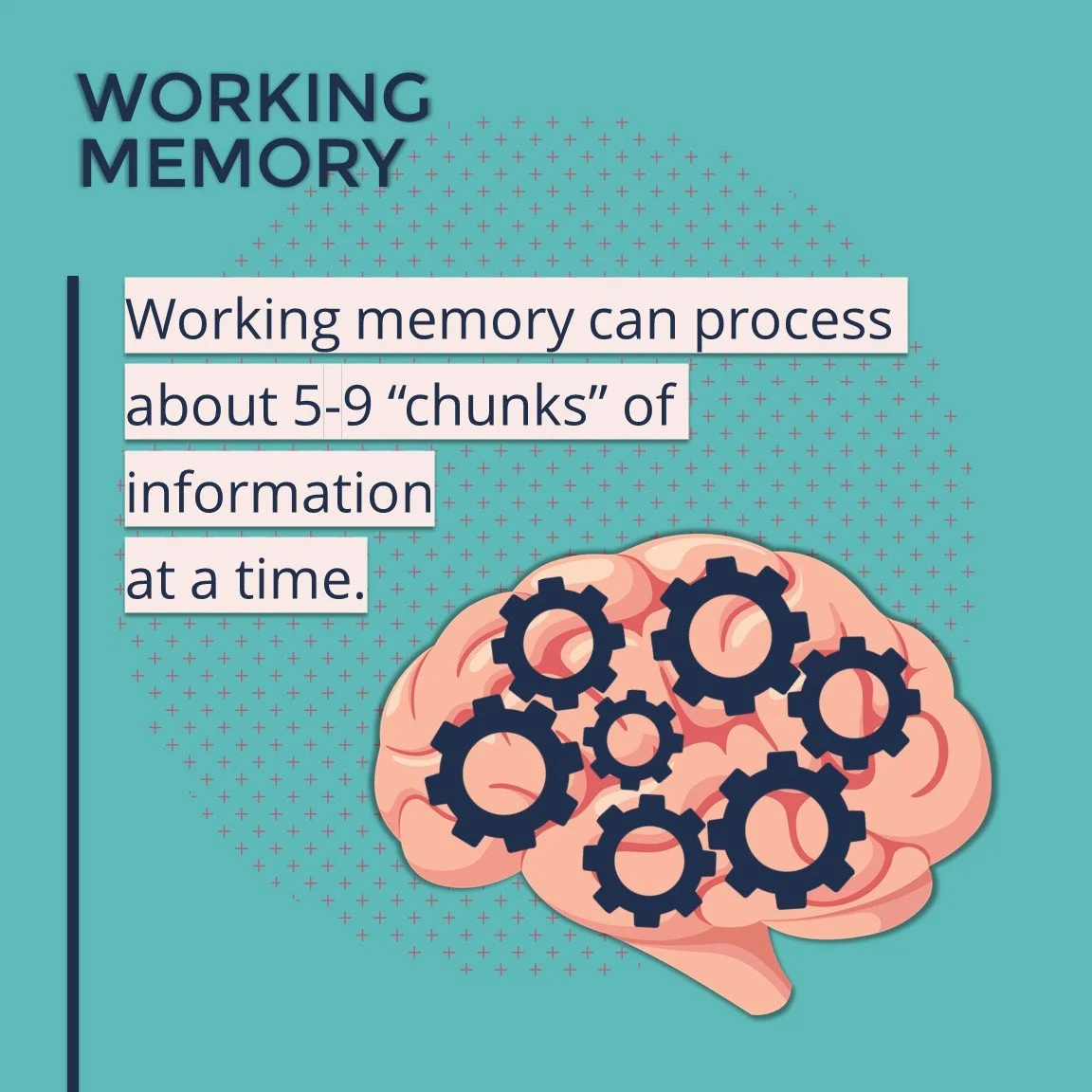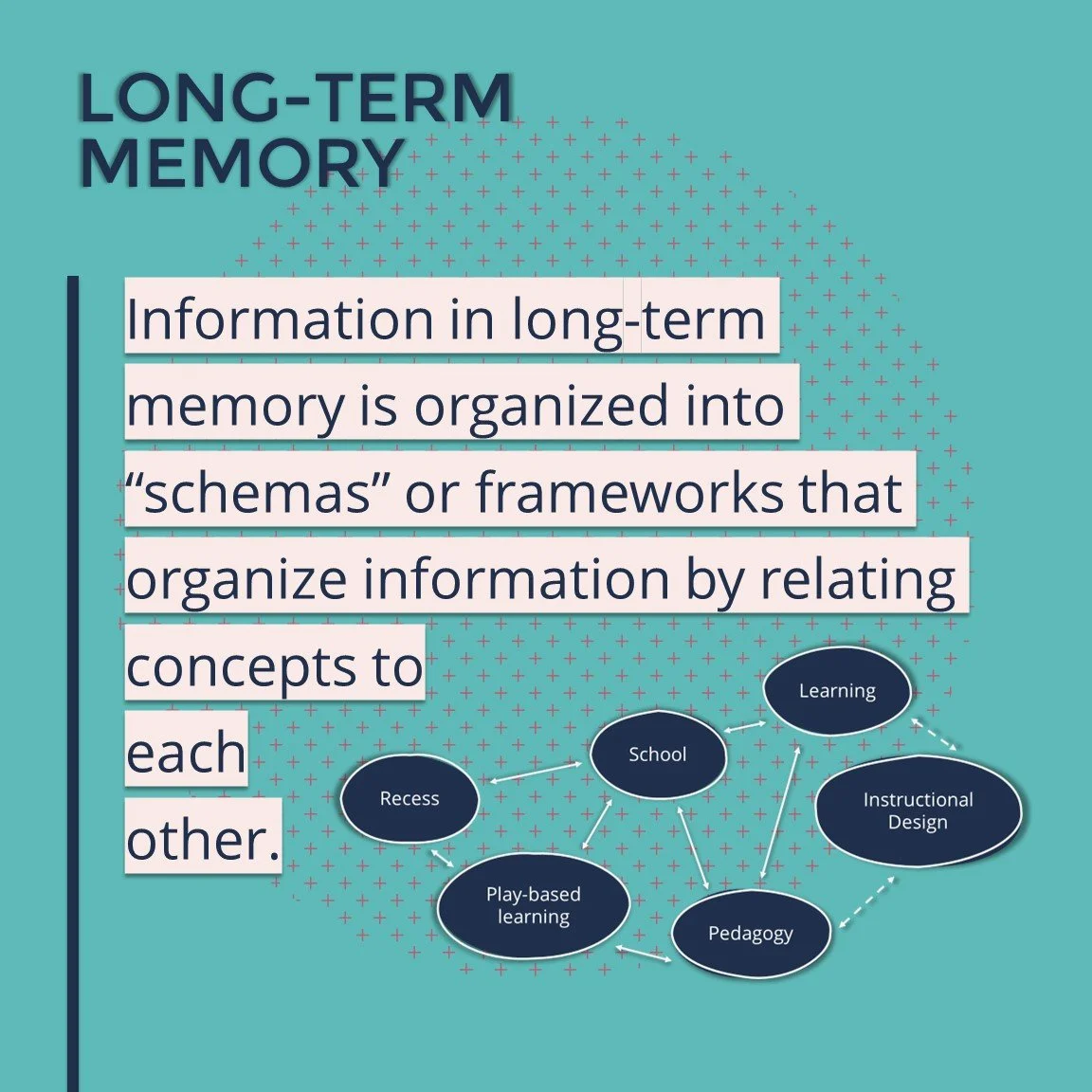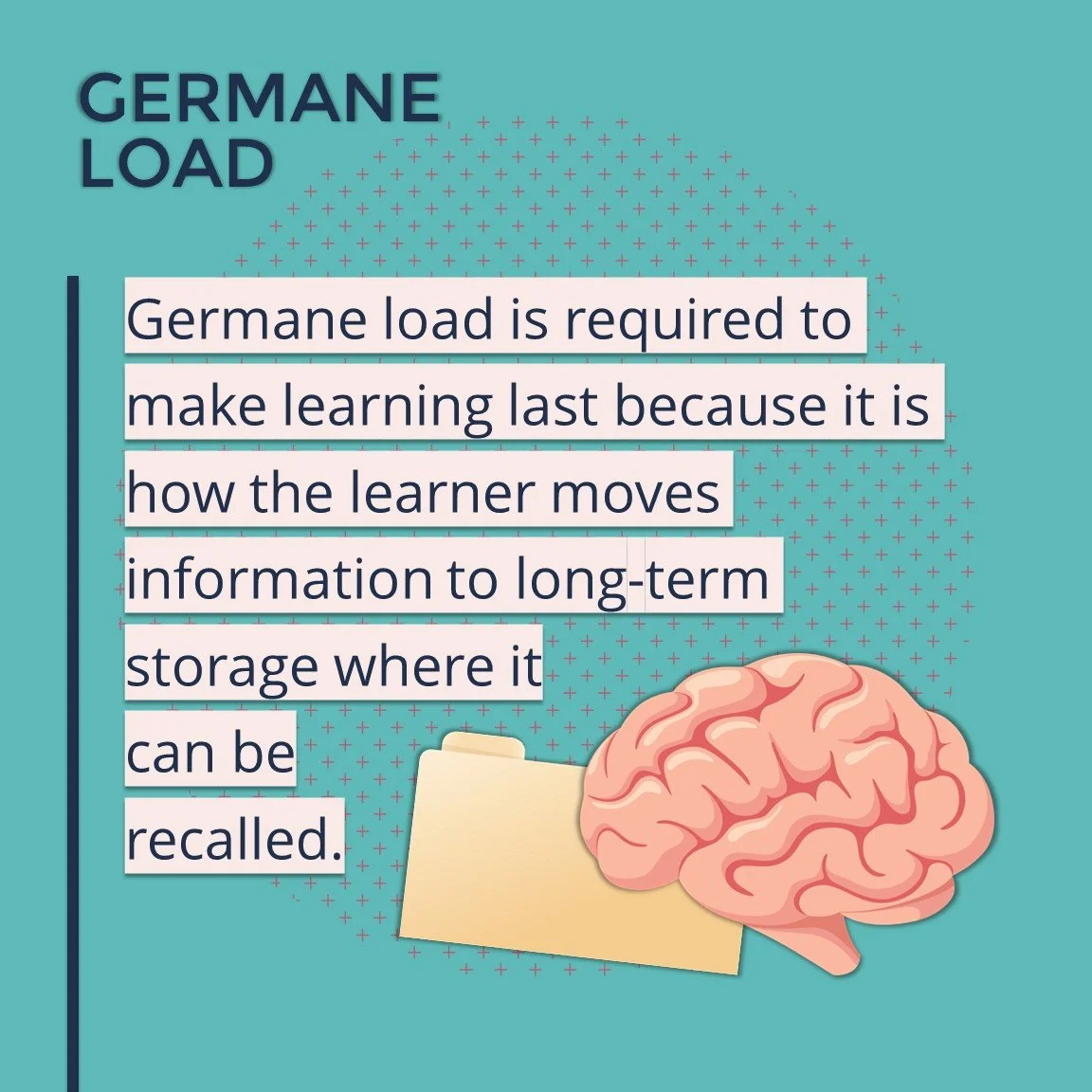How Cognitive Load Theory Effects Learning
Cognitive load theory focuses on the amount of mental effort (or load) a person experiences while processing information. It also considers how this load affects learning and retention.
This model focuses on three types of memory: sensory memory, working memory (or short-term memory), and long-term memory.
Sensory Memory
Sensory memory is the information we receive from our senses, such as what we see and hear.
We filter out a lot of this information automatically. For example, as you walk into a coffee shop with a friend, you may notice the sounds of the machines, people talking, and the barista taking orders. However, after a short time, your brain will start to tune this information out, giving you space to pay attention to what your friend is saying instead.
Information lasts about 3 seconds in sensory memory before being moved to working memory, filtered out, or forgotten.
Working Memory
Working memory, also referred to as short-term memory, refers to the information we consciously process.
Working memory can process about 5-9 “chunks” of information at a time. Although, some studies have indicated that this number is lower.
Information in the working memory can last from seconds to minutes, although much of this information is forgotten as well.
Rehearsal
To keep information in working memory, the learner must practice or review the information so that it stays in the conscious mind. Consider how you might repeat a phone number or Wi-Fi password in your head until you can type it. Note too, that this information can be quickly forgotten when you stop actively thinking about it.
However, to facilitate the transfer of information to long-term memory, rehearsal involves connecting new information to existing knowledge and organizing that information into frameworks inside your long-term memory.
Long-Term Memory
Long-term memory is the information that we store in our minds for later.
Information in long-term memory is organized into “schemas” or frameworks that organize information by putting it into categories and relating concepts to each other.
For example, you have a “schema” for cars that includes things like tires, windows, doors, seatbelts, engines, and dashboards and how they relate to each other. When you learn something new about a car, the information gets organized into this preexisting schema.
Information can last in your long-term memory for a few days, or it can be retrieved decades later.
The more you recall information from long-term memory, the easier it is to retrieve that information in the future. However, if you do not access certain information, it will be harder to recall later, and may eventually disappear from your memory.
Encoding
To move information into long-term memory, the learner must “encode” the information by focusing on the information and organizing it into a schema.
This may involve creating a hierarchy for the information or relating it to prior knowledge.
Organizing new information in this way reduces the effort it takes to hold information in working memory (intrinsic cognitive load) by giving context to the new information.
Decoding
To retrieve information from long-term memory, there must be a prompt that triggers the learner to recall certain information.
For example, you might hear someone mention the Gettysburg address, which would prompt you to recall that Abraham Lincoln was the one to give that speech.
The more a learner recalls particular information, the easier it becomes to retrieve that information in the future.
Cognitive Load and Learning
Using each of the three types of memory (sensory memory, working memory, and long-term memory) takes effort. This effort is referred to as “cognitive load.”
Cognitive load is limited – there is only so much information we can process at a given time.
Our senses can be overloaded by information, forcing us to make a choice as to what sensory information we pay attention to.
Should I listen to this conversation or that one?
As noted before, working memory can only hold 5-9 chunks of information at a time.
As an instructional designer, it is your job to present new information to the learner without overloading their cognitive abilities. If you present more information than the learner can process, they will filter out or forget much of the lesson content as they make room for other information.
The good thing is, each “schema” such as the car example we just used, counts as one “chunk” of information in our working memory.
So, relating new information to an existing schema can help the learner process more information.
Many of the multimedia learning principles you will read about in this chapter are centered around reducing the cognitive load or presenting content in a way that does not overwhelm the learner.
Types of Cognitive Load
So, we know that processing information puts a “load” on our brains. Another way to say this is that thinking and learning takes cognitive effort.
There are three ways that cognitive load can be categorized: extraneous load, intrinsic load, and germane load.
Extraneous Load
Extraneous load is the “extra” or unnecessary load that doesn’t support learning. This can come from poor user design, which requires the user to think about how to navigate the training, which distracts from the lesson content. Irrelevant information or decorative images can also divide the learner’s concentration between what’s important and what’s not.
Intrinsic Load
Intrinsic load refers to how much cognitive effort it takes to hold information in working memory as the learner processes the lesson content. This load varies based on the complexity of the content and the inherent level of difficulty to learn it.
While this type of cognitive load is a necessary part of learning, it is important for an instructional designer to help the learner manage intrinsic load so that they can retain the information being taught.
Germane Load
Germane load refers to the cognitive effort required to process and construct schemas as the learner moves information from working memory to long-term memory. This is also an essential part of learning and is required to make learning last beyond the training because it is how the learner moves information to long-term storage where it can be recalled.
Conclusion
Cognitive load theory provides a framework for understanding how individuals process and retain information.
Sensory memory captures stimuli briefly before filtering it out, while working memory holds a limited amount of information consciously. Long-term memory, where information is stored for later retrieval, relies on encoding and retrieval processes.
Cognitive load, divided into extraneous, intrinsic, and germane loads, illuminates the challenges learners face in managing mental effort during learning. Instructional designers play a crucial role in optimizing learning experiences by minimizing extraneous load, aiding in managing intrinsic load, and fostering germane load through effective instructional strategies.
By aligning instructional methods with cognitive load principles, educators can enhance learning outcomes and facilitate the transfer of knowledge from working memory to long-term memory, ultimately supporting lasting retention and application of learned concepts.
About Me
Hi! I'm Elizabeth!
I specialize in eLearning development, where I create engaging courses that are designed to change the behavior of the learner to meet the needs of the organization.
Reach out if you need a high-quality innovative learning solution.







